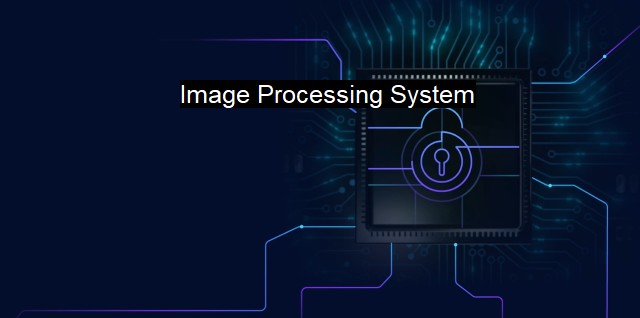What is Image Processing System?
Revolutionizing Cybersecurity: The Role of Image Processing and Machine Learning in Detecting Sophisticated Threats
An Image Processing System is an innovative technology that utilizes algorithms to examine and manipulate digital images. The purpose of this manipulation is to extract valuable information from the photos or to enhance their aesthetic appeal. these systems play a critical role in helping organizations identify and neutralize digital threats.With the proliferation of digital technology and the critical need for visual information, techniques such as image processing systems play a pivotal role. They store, process, and study images systematically to deliver valuable data promptly. An image processing system can include procedures such as image acquisition, image enhancement, image representation, etc.
These systems operate in two major domains – spatial (direct manipulation with images) and frequency (modifying the Fourier or other conversions). Image processing systems are invaluable in a wide range of applications, from consumer electronics and computer science to healthcare industries and cybersecurity, to mention a few.
The role of an Image Processing System in cybersecurity cannot be underestimated, being used extensively in facial recognition, behavior analysis, pattern recognition software, and semantic understanding of visual scenes. They are changing the scope of cybersecurity efforts by offering new and dynamic mechanisms for identifying and warding off potential security threats.
For antivirus programs, Image Processing Systems can assist in identifying visual cues or hidden code within an image file that signifies the presence of malware or a virus. In many types of malware, the code is often embedded within seemingly innocuous files and an Image Processing Systems are adept at scanning and detecting these hidden threats.
Modern-day data breaches can involve malicious software discreetly embedded in image files that when opened, can unleash havoc on a computer system or network. This type of cyber-attack, also known as steganography, is potent because it can bypass conventional security measures ardently. A competent image processing system can detect these forms of malware by analyzing the data and detecting anomalies.
Increased application of Image Processing Systems for biometrics in cybersecurity is another profound instance of its application. Sophisticated image processing systems form the basis of facial recognition and fingerprint technology commonly used for access controls. Recognizing facial features and comparing them with data in security systems adds an extra security layer, reducing the likelihood of security breaches.
Image Processing Systems can aid in constructing sequences of images that can identify abnormal activity within a protected system's environment. This function, often referred to as behavior analysis, offers real-time monitoring capability for identifying and halting unauthorized activity.
Lastly, as machine learning and artificial intelligence continue to improve and make strides in technology, the advancements in image processing systems also keep pace. These advancements can be leveraged for auto-detecting potential threats by predicting abnormal patterns in image data, thereby reinforcing cybersecurity measures.
Image Processing Systems are technological tools that analyze and modify images effectively to serve diverse purposes. Given the evolution of waves of cyber-attacks, Image Processing Systems significantly come into play to escalate cybersecurity and virus protection. They form part of the innovative solutions to the growing problem of increasingly sophisticated hacking techniques that conventional antivirus systems struggle to handle adequately. To safeguard against growing digital threats, image processing systems offer a dynamic and evolving platform to intercept and neutralize these threats before they can inflict damage. So an Image Processing System is not just beneficial but rather indispensable.

Image Processing System FAQs
What is an image processing system used for in cybersecurity?
An image processing system in cybersecurity is used to analyze and detect potential threats or malware in image files. This system can also be used to extract useful information from images for further analysis.What are the benefits of using an image processing system for antivirus software?
The use of an image processing system in antivirus software allows for more efficient and accurate detection of malware and viruses that may be hidden within image files. It also helps to reduce false positives and increases the overall efficacy of the antivirus software.What types of image processing algorithms are commonly used in cybersecurity?
Some common image processing algorithms used in cybersecurity include pattern recognition, image segmentation, feature extraction, and machine learning algorithms. These algorithms allow for the detection and analysis of potentially malicious image files.Can an image processing system be used to protect against steganography?
Yes, an image processing system can be used to identify and detect steganography, which is the practice of hiding information within an image file. By analyzing the image data, an image processing system can identify any anomalies or patterns that may indicate the presence of hidden data.| | A | | | B | | | C | | | D | | | E | | | F | | | G | | | H | | | I | | | J | | | K | | | L | | | M | |
| | N | | | O | | | P | | | Q | | | R | | | S | | | T | | | U | | | V | | | W | | | X | | | Y | | | Z | |
| | 1 | | | 2 | | | 3 | | | 4 | | | 7 | | | 8 | | |||||||